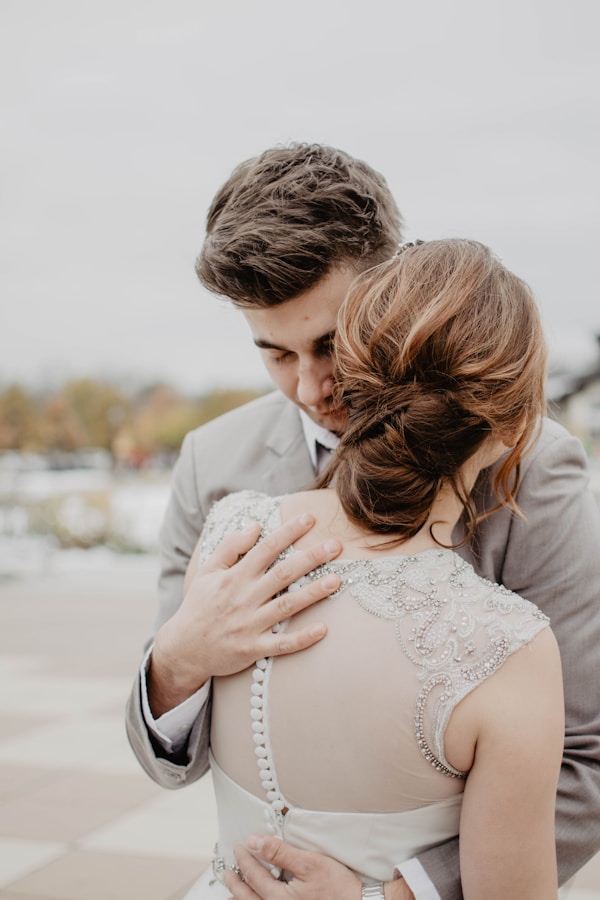How to Effectively Manage Alterations for a Wedding Dress with a Unique Shoulder Drape
Choosing the perfect wedding dress is a pivotal moment in every bride's journey towards the altar. Among various design elements, a unique shoulder drape stands out, adding elegance and sophistication to the gown. However, managing alterations for such intricate details can be challenging yet essential to ensure the dress fits perfectly and enhances the bride's natural beauty. In this article, we will delve into strategies for handling alterations for a wedding dress with a unique shoulder drape, along with common concerns brides may have during this delicate process.
Understanding the Unique Shoulder Drape
The shoulder drape is a design feature that can significantly change the appearance of a wedding dress. It can be made from various fabrics, including chiffon, silk, or lace, and may come in styles ranging from asymmetrical to cascading. Understanding the intricacies of this unique design is crucial before proceeding with alterations. Here are some common types of shoulder drapes:
| Type of Shoulder Drape | Description |
| Asymmetrical | A drape that falls over one shoulder, creating an elegant, dramatic effect. |
| Cascading | A flowing drape that starts from the shoulder and falls gracefully down the arm. |
| Structured | A tailored drape that is more rigid, often incorporating boning for added support. |
Initial Steps Before Alterations
Before embarking on the alteration journey, here are a few essential steps to consider:
1. Choosing a Skilled Seamstress
Finding a professional with experience in altering Wedding dresses, especially those with unique designs, is crucial. Look for recommendations from friends, family, or bridal boutiques. A skilled seamstress will understand the complexities of fabric manipulation and will help maintain the integrity of the shoulder drape.
2. Conducting a First Fitting
Schedule an initial fitting soon after purchasing your wedding dress. This fitting helps identify areas that need adjustment, particularly around the shoulder drape. It is vital to wear the same undergarments and shoes you plan to wear on your wedding day for the most accurate results.
3. Communicating Your Vision
Share your expectations and concerns with your seamstress. Show them photos of your dress and discuss how you would like the shoulder drape to flow. Clear communication ensures that the final result aligns with your vision.
Common Alterations for a Wedding Dress with a Unique Shoulder Drape
When it comes to altering a wedding dress with a unique shoulder drape, several modifications might be necessary:
1. Adjusting the Length and Fit
The dress’s length is often one of the first adjustments to consider. If the shoulder drape is too loose, it can distort the neckline's shape and cause the dress to fit improperly. The seamstress may need to take in or let out seams and adjust the drape to maintain its beauty while fitting the bride's frame.
2. Reshaping the Drape
If the drape doesn’t fall right, reshaping may be required. Your seamstress can restructure the drape to achieve the desired effect, ensuring it complements your body type. This can involve re-sewing or adding additional fabric to enhance the silhouette.
3. Altering the Closure
Shoulder drapes sometimes affect how the dress closes at the back or side. A seamstress may need to modify zipper placements or hook placements for a seamless fit. The closure must work with the drape to avoid unflattering bulges or gaps.
Final Fitting: A Critical Step
The final fitting is perhaps one of the most important appointments. At this stage, it’s crucial to try on the dress with all accessories, such as the veil and jewelry, to visualize the complete look. Pay attention to how the shoulder drape interacts with these elements.
1. Check the Drape in Motion
Move around in your dress to see how the shoulder drape behaves. It should flow elegantly as you walk and move. This is an excellent opportunity to discuss any last-minute adjustments with your seamstress to ensure that every detail is perfect.
2. Pay Attention to Comfort
Comfort is key on your wedding day. Ensure that the shoulder drape feels comfortable and doesn’t restrict your movement. Make sure the placement doesn’t dig into your skin or cause any irritation, as this can lead to an uncomfortable day.

Additional Considerations for Brides
As you manage alterations, keep these additional considerations in mind:
1. Budgeting for Alterations
Alterations can add significantly to the total cost of your wedding dress. Be sure to budget accordingly, typically setting aside 10-15% of the dress's purchase price for alterations. Remember, complex features like shoulder drapes may require more intricate work, which could increase costs.
2. Time Management
Start your alterations process at least two to three months before your wedding day. This allows ample time for fittings and adjustments, reducing the stress of last-minute changes. Patience is key; alterations can take time, especially when dealing with detailed designs.
3. Staying True to Your Style
While it’s easy to be swayed by alterations, remember to stay true to your original vision. If you find the alterations are changing the essence of the dress, speak up! Your dress should embody your personal style and make you feel beautiful on your special day.
Conclusion
Managing alterations for a wedding dress with a unique shoulder drape might seem daunting, but with the right information and resources, you will ensure a perfect fit that enhances your beauty. It's essential to communicate clearly with your seamstress, budget wisely, and allow ample time for the alteration processes. Embrace the journey, trust your expertise, and remember that your wedding dress is a reflection of your unique style. Finalize your decisions and get ready to shine on the big day!
By following these strategies and tips, you will find joy in the fitting process and ensure that your wedding dress fits flawlessly, creating a memorable look for your special day.